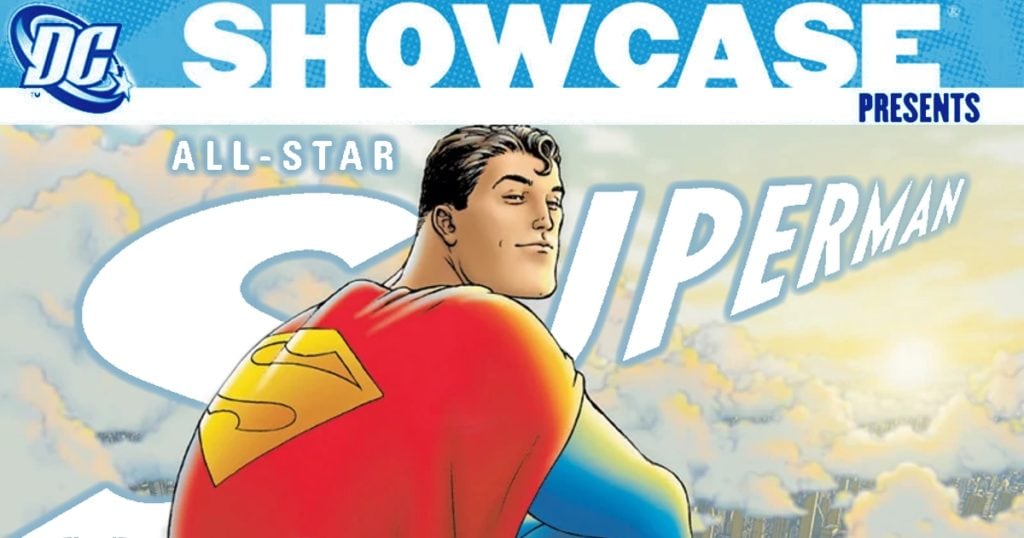DC Showcase: ‘Superman for All Seasons’ Comic Review
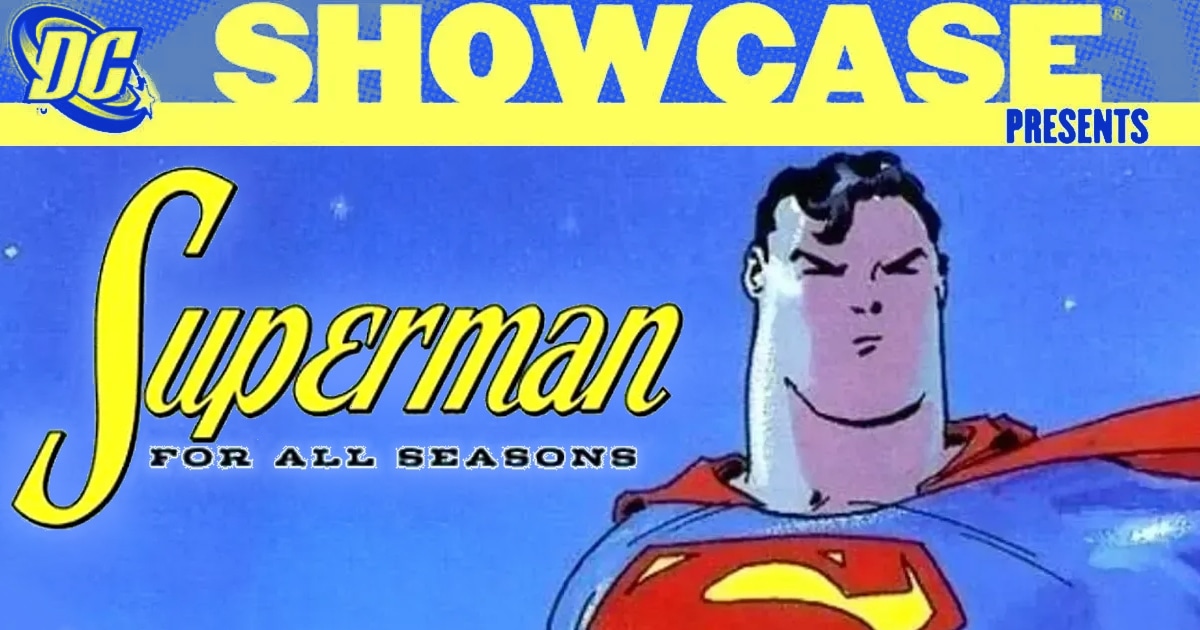
Superman for All Seasons is the incredible follow-up to Jeph Loeb & Tim Sale’s Batman: The Long Halloween. Rather than making a connected universe with the plan to crossover, the creators made the calculated decision to take the exact same character-focused approach to Superman as they did with Batman.
Loeb and Sale wanted to tell a story that balanced the heroics of Superman, the humanity of Clark Kent, and the core characters of his classic supporting cast. The result is that Superman for All Seasons presents not only one of the most heartfelt versions of Superman ever written, but also one of the best portrayals of his surrounding community. If you like Smallville, Superman & Lois, or Superman: The Animated Series, then Superman for All Seasons is the ultimate comic for you.
Tim Sale and Jeph Loeb had a long comics career together, spanning over three decades. In that time, Jeph Loeb won four Eisner Awards and was nominated for two more. Tim Sale shared all of his Eisner wins with Loeb for their work on Long Halloween and Dark Victory. However, Sale’s only individual Eisner came from his work on Superman for All Seasons, as Best Penciller. For All Seasons was also nominated for three more Eisners: Best Limited Series, Best Writer, and Best Coloring.
Superman for All Seasons came out in 1998, on the heels of Superman: The Animated Series, and just before Smallville. The comic is filled with homages to the history of the character in comics and beyond, including the Max Fleischer Superman cartoons and Superman the Movie, with light touches of the 90s animated series as well.
Given the legacy of their hero, Loeb and Sale smartly play with reader expectations to add elements of surprise to such a well-known story. Synthesizing the greatest elements from the history of Superman, For All Seasons immediately became one of the most definitive comics versions of the character, and would later inspire major adaptations like Smallville, Man of Steel, and Superman & Lois. So in this edition of DC Showcase, let’s take a look at what makes this comic so special, and how could it influence James Gunn’s Superman: Legacy!
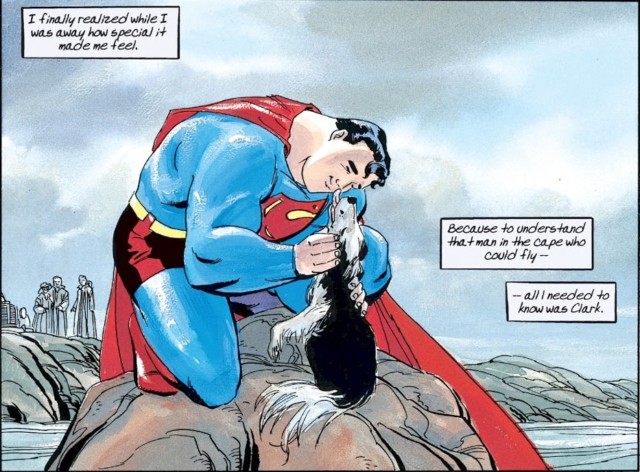
From Smallville to Metropolis: The story of For All Seasons
Superman for All Seasons starts with an intense close up of the world-famous Superman symbol, then suddenly zooms out to a farm where a boy is looking for his pa. This simple opening dramatically defines the approach of this comic as a humanizing perspective on the legend of Superman.
The story is told across four issues. Each installment feels like a proper book on its own, giving the series a leisurely sense of pacing. In addition to Jeph Loeb’s well-balanced plots, the issues are distinct because each one features a different narrator at a different point in Clark’s life. Together, the four speakers chart Clark’s growth from Smallville teenager to savior of Metropolis and back home again. The storytelling technique allows for four fresh perspectives into the classic tale of Superman, keeping this retelling of his origin story completely unique from any other version.
In the first issue, Pa Kent intersperses Clark’s youth with analogies about young crops and simple reflections on what it would be like for a humble farmer to raise a god-powered alien from another planet. The story continues all the way up to Metropolis and the early appearances of Superman.
The second issue picks up from Lois Lane’s point of view as the superhero action escalates from small-town cyclones to international incidents. Lois’ issue presents an immediate juxtaposition with Pa Kent’s simple but firm belief in his son, as her narration comes with the constant skepticism of a detective struggling to decode the mystery of Superman (similar to Amy Adams’ portrayal in Man of Steel). Lois has been forced to reconsider her pragmatic sense of the world now that an unreal man-god has appeared before her, infuriating her instincts as a reporter as she struggles to make sense of the impossible.
Lex Luthor takes over issue three, at which point his petty, slimy, manipulative, and toxic behavior is enough to kick Clark Kent out of Metropolis. Clark tries to return to Smallville for comfort in issue four, but Loeb’s narration perfectly captures the pain in the expression “You can never go home again.” This final issue brings the story to a close with narration by Lana Lang, who is mature, loving, and supportive of Clark, even to the point of heartbreaking selflessness.
Even for new fans, For All Seasons is layered with a warm sense of nostalgia. Letting each issue be narrated by the people closest to Superman immerses the reader intimately in the emotions of the story. The style of Superman for All Seasons is so effective because as audience members, we are never the heroes themselves, only the spectators watching from the sidelines. The fact that such a well-known origin is told as a series of memories adds the feeling that these are our memories too. Every page of Superman for All Seasons feels like a timeless memory from the early days of our best friend Superman.
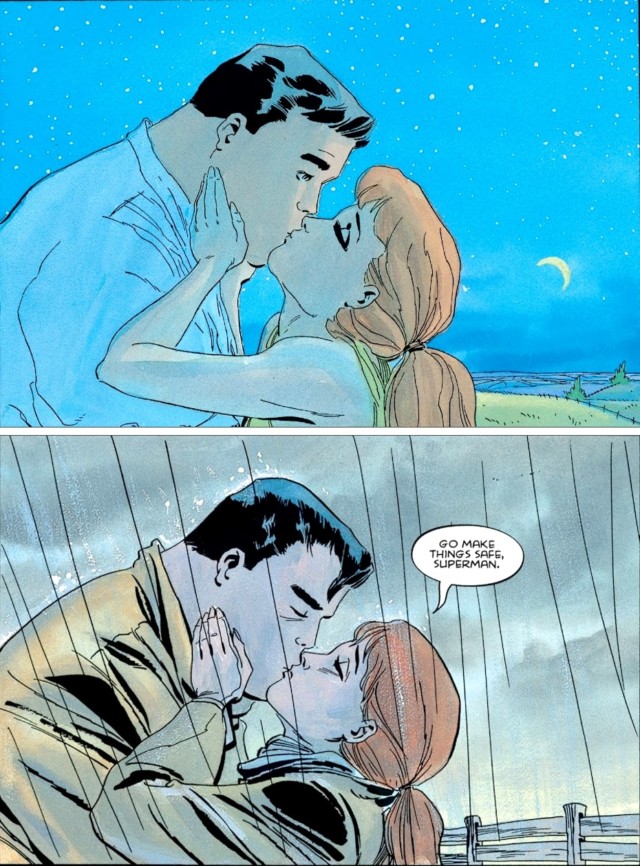
The reading experience of Superman for All Seasons
One of the greatest achievements of For All Seasons is the art. Tim Sale and master colorist Bjarne Hansen create a piece that is utterly transcendent, channeling Norman Rockwell through homey watercolor paintings which capture the simple wonders of life. The blues, reds, and yellows are bright and bold. The softly textures are decorated within minimalist lines curved within large rounded shapes, sometimes even abstract.
The Superman of For All Seasons is characterized as the heroic optimist we traditionally associate Superman to be, and this extends to a very distinctive art style for the main character. In this series, Clark is significantly bigger than the other characters, adding a larger-than-life distortion to the look of the book. At first glance, Sale’s art portrays Superman as a big soft baby, but Loeb’s script quickly gives him a hard-edged zero-tolerance threshold for dangerous threats like Lex Luthor.
The two creators work together so well that they’re able to craft the ultimate Superman who is soft and gentle, yet tough enough to fiercely protect his city. Underneath the “big baby” aesthetic, Sale’s mighty lines and giant proportions give Superman a sense of power and strength, a trait Frank Quitely would adopt for All-Star Superman a few years later.
The layout of the book caters to a large-scale format with massive rectangular panels and frequent splash pages. Repeated image motifs go beyond a pattern of comfort, showing Clark’s evolution over time as he grows through the repeated cycles of life. Like the seasons in the title of the book, these moments recur but he is older and more mature each time.
Each issue is about 45 pages, which is double the length of a standard comic. I have found that this affects the pacing for me, as forty-five continuous pages of gorgeously detailed art makes it a bit arduous to read, even though I loved what I was reading. To resolve this, I feel like the book could have used a chapter break in the middle of each issue, subdividing the series into eight parts (two per narrator). However, this was only my experience, and others may be fine with the comic as is.
One of my favorite details about the book is the lettering. Letterer Richard Starkings gives each narrator their own style. The lettering of issue one is big and a little clumsy, with soft corners. This handcrafted font style applies perfectly to Jonathan Kent (sentence case), and is also the same font used for the regular dialogue in the book (all capital letters). To get in Lois’ headspace, Starkings adopts a more serious typewriter font, which feels just imperfect enough that you can imagine the individual type elements hitting the page with each letter.
All the narrators have personal fonts, except Lex Luthor, who gets uncreative standard comic book text with capital letters. His coldness is immediately countered with Lana’s earnest lettering in issue four. Her purely natural handwriting script shows her complete “normalness” in contrast to the other characters like Lois and Lex. Starkings’ letters with Loeb’s writing brings each narrator to life in a way that feels emotionally real and true to their characters.
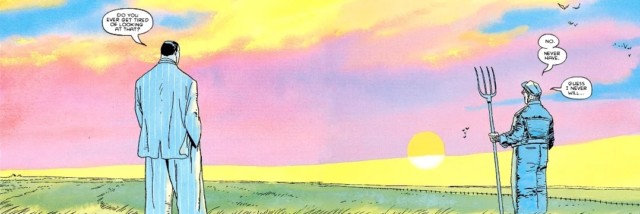
How to read Superman for All Seasons
Superman for All Seasons is totally standalone, and is one of the easiest Superman stories for new readers to fall in love with. In fact, this comic is so friendly that it is my #1 Superman recommendation, even above more famous classics like All-Star Superman. For All Seasons is one of the most emotionally resonant Superman stories ever told, and it is an essential experience for fans of endearing adaptations like Smallville, Superman & Lois, and Superman the Movie.
For more iconic Superman stories, be sure to check out Superman: Birthright by Mark Waid, Superman: American Alien by Max Landis, Superman: Secret Identity by Kurt Busiek, Superman/Batman by Jeph Loeb, and Superman Annual #11 (“For the Man Who Has Everything”) by Alan Moore.
If you love the specific style of Superman for All Seasons and want more like it, you’re in luck! Jeph Loeb and Tim Sale worked together for over twenty years at both Marvel and DC and their work was consistently fantastic. After reading For All Seasons, I especially recommended Batman: The Long Halloween so you can recognize the creators’ brilliance in how their different approaches to Batman and Superman allowed them to create a quintessential comic for each.
The For All Seasons version of Superman would later reappear in a few short stories by Loeb and Sale. All these continued adventures are included in the “Deluxe” and “Absolute” editions of Superman for All Seasons, but aren’t necessary reading to enjoy the main story. I’ve marked them below in bold.
- Jeph Loeb & Tim Sale collaborations:
- Challengers of the Unknown Must Die! (DC, 1991)
- Batman: Haunted Knight (DC, 1993)
- Wolverine & Gambit: Victims (Marvel, 1995)
- Batman: The Long Halloween (DC, 1996)
- Superman for All Seasons (DC, 1998)
- Batman: Dark Victory (DC, 1999)
- Daredevil: Yellow (Marvel, 2001)
- Spider-Man: Blue (Marvel, 2002)
- Hulk: Gray (Marvel, 2003)
- Superman/Batman: Secret Files & Origins #1 (“When Clark Met Bruce”) (DC, 2003)
- Catwoman: When in Rome (DC, 2004)
- Solo #1 (“Prom Night”) (DC, 2004)
- Superman/Batman #26 (“Sam’s Story”) (DC, 2006)
- Captain America: White (Marvel, 2008/2015)
Separately, Loeb also continued working with Superman in his own runs on Superman and Superman/Batman. Sale illustrated Superman again in the well-regarded Superman: Kryptonite, working with fellow legend Darwyn Cooke (Batman: Ego, DC: The New Frontier). These are great recommendations if you’d like to dive even deeper into the creators’ catalogs.
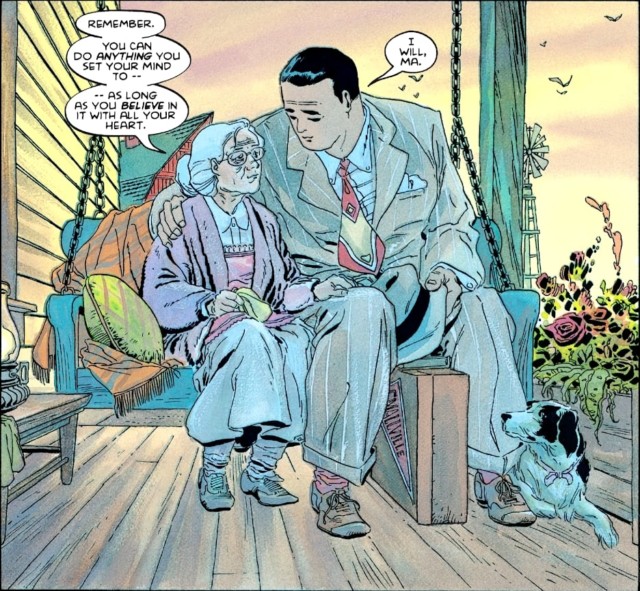
Adapting For All Seasons on screen with Superman: Legacy
Unfortunately, as far as I know, there have not been any attempts to adapt Superman for All Seasons in animation, and that breaks my heart a little bit. But thankfully, the footprint of For All Seasons can be felt widely across Superman adaptations in the 21st century.
Superman for All Seasons contributed one of the best templates for Smallville’s wholesome small-town community and Clark’s humble roots, and even the name of their dog Shelby. It also inspired Man of Steel’s portrayal of Smallville, the cyclone that killed Pa Kent, and Lois’ investigation into Superman. Most recently, For All Seasons provided the tone of Superman & Lois. Even iconic scenes like “My mom made it for me” were taken directly from the comic. Perhaps the greatest legacy of Superman for All Seasons is seeing how these adaptations have taken the DNA of this book and reinterpreted it or even improved it, further evolving the mythology of Superman.
Given the beauty and revolutionary importance of Superman for All Seasons, how could it inspire Superman: Legacy? The answer is simple because Superman for All Seasons is the purest example of the pitch for Superman: Legacy, “Human kindness in a world that sees kindness as old-fashioned.”
The movie doesn’t need to follow the plot of For All Seasons exactly, but the tone, characterization, atmosphere, and visual design of this comic should be strong influences for James Gunn’s approach. So just as the other adaptations have done, Gunn could look to For All Seasons for examples of Superman’s balance of gentle toughness (particularly with his zero-tolerance for ill-intentioned characters like Lex Luthor), the smooth progression from humble small-town hero to big city savior, and the balance of grounded realism with ridiculous science-fiction elements.
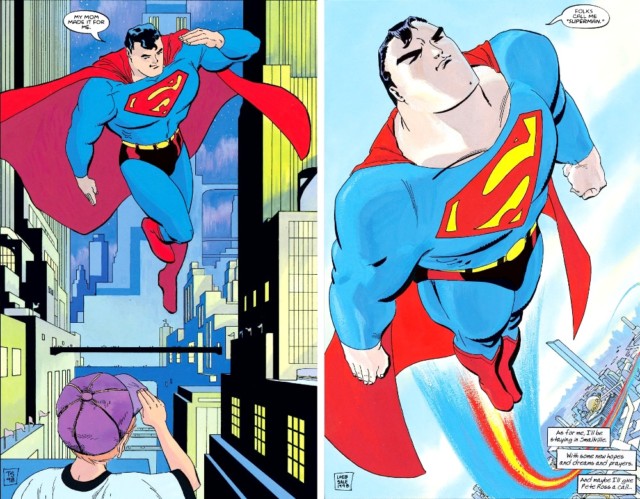
My verdict on Superman for All Seasons
For me, Superman for All Seasons is the quintessential, perfect, ultimate Superman story. Anyone can read this and enjoy it as their first Superman comic, and the nuance of the characterization is rewarding for long-time fans as well. For All Seasons captures the heart and humility of Superman without losing the toughness that makes him a fierce force of good.
Jeph Loeb and Tim Sale remind us of the amazing story of an alien immigrant raised by loving parents to create a better future for the world. The simple optimism of this might sound familiar or even cliché, but that’s because of the impact of Superman as an archetype, and because of the legacy of hope and inspiration Superman has already brought to so many.
There is no Superman comic I can recommend more than Superman for All Seasons. This is the kindness, accessibility, and warmth of Superman made real for us readers through the perspective of his supporting cast and the wonders of breathtaking artwork, and it is so instantly easy to love for new fans. If you struggle to see classic Superman as an interesting character, I recommend Superman for All Seasons as a genuine showcase of how special this hero can be. There is no better place to start.
Who’s your favorite version of Superman? What are you planning to read before Superman: Legacy? Let me know on Twitter @vinwriteswords and remember to follow the site @MyCosmicCircus for more comics coverage coming soon!
Check out our full list of DC comic reviews here, including our reviews of All-Star Superman and Supergirl: Woman of Tomorrow!

